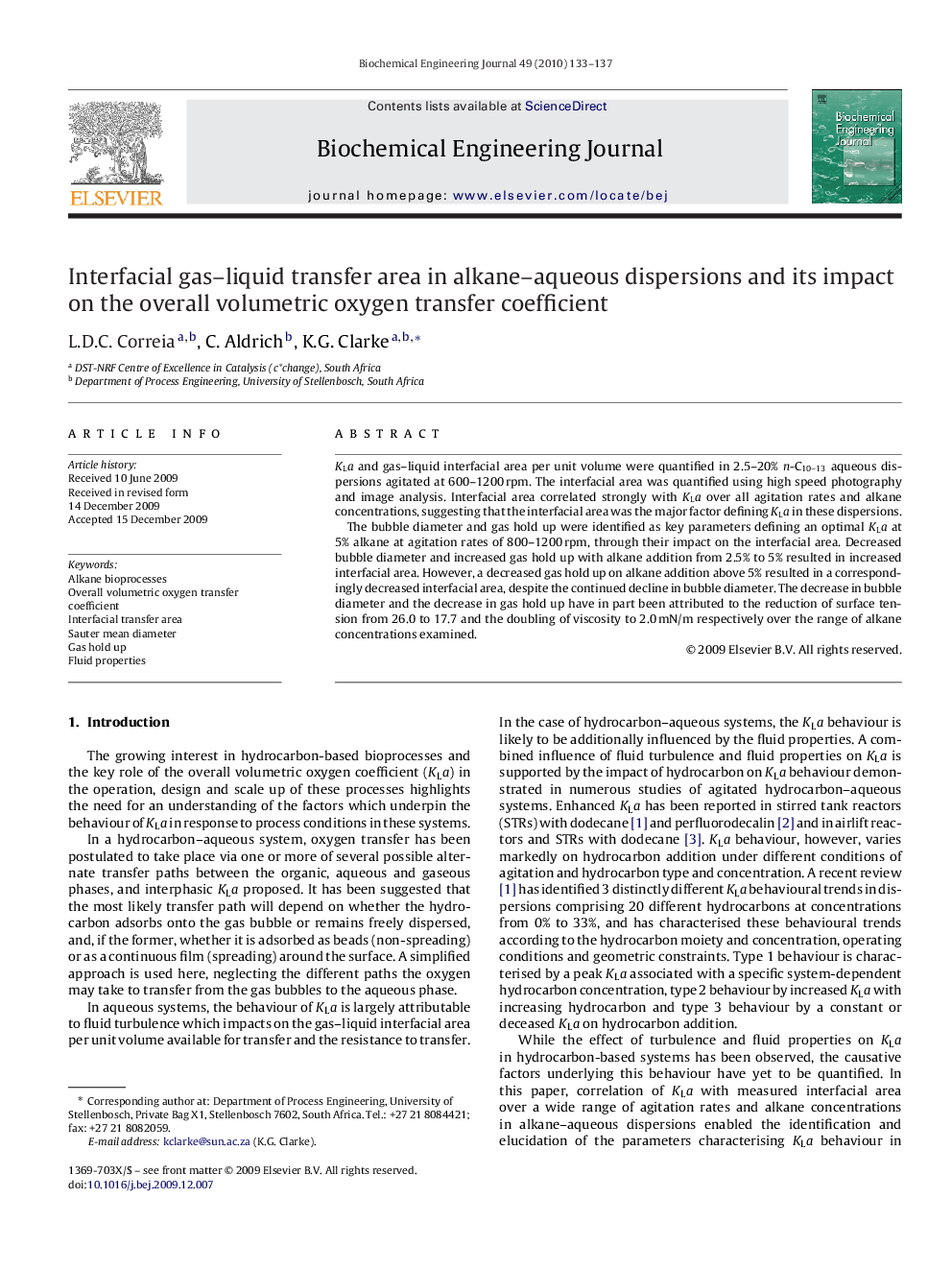| Article ID | Journal | Published Year | Pages | File Type |
|---|---|---|---|---|
| 4106 | Biochemical Engineering Journal | 2010 | 5 Pages |
KLa and gas–liquid interfacial area per unit volume were quantified in 2.5–20% n-C10–13 aqueous dispersions agitated at 600–1200 rpm. The interfacial area was quantified using high speed photography and image analysis. Interfacial area correlated strongly with KLa over all agitation rates and alkane concentrations, suggesting that the interfacial area was the major factor defining KLa in these dispersions.The bubble diameter and gas hold up were identified as key parameters defining an optimal KLa at 5% alkane at agitation rates of 800–1200 rpm, through their impact on the interfacial area. Decreased bubble diameter and increased gas hold up with alkane addition from 2.5% to 5% resulted in increased interfacial area. However, a decreased gas hold up on alkane addition above 5% resulted in a correspondingly decreased interfacial area, despite the continued decline in bubble diameter. The decrease in bubble diameter and the decrease in gas hold up have in part been attributed to the reduction of surface tension from 26.0 to 17.7 and the doubling of viscosity to 2.0 mN/m respectively over the range of alkane concentrations examined.
